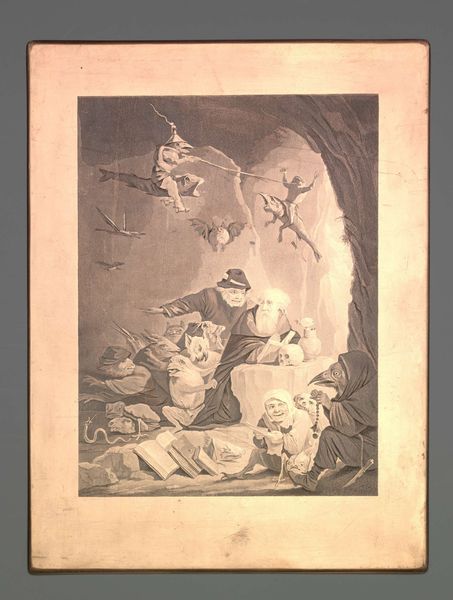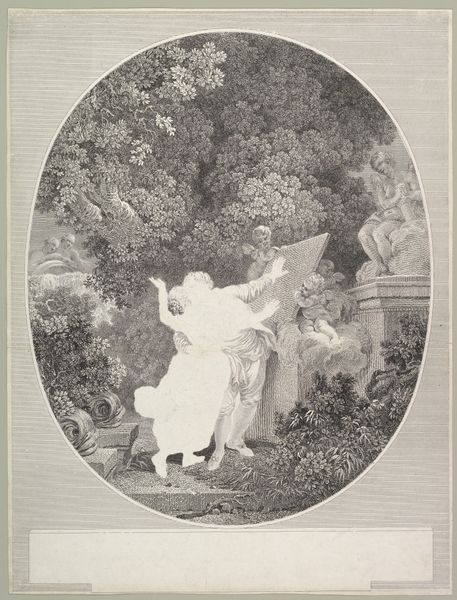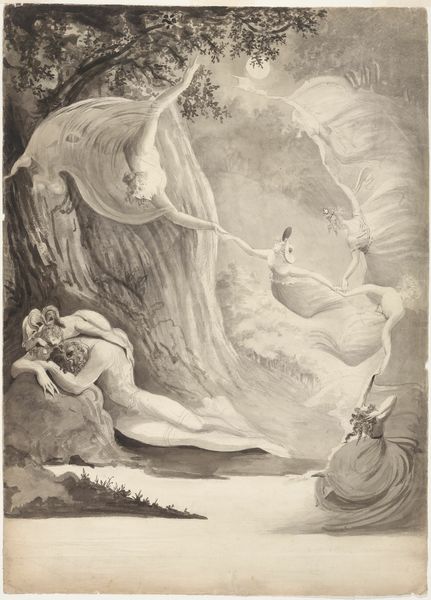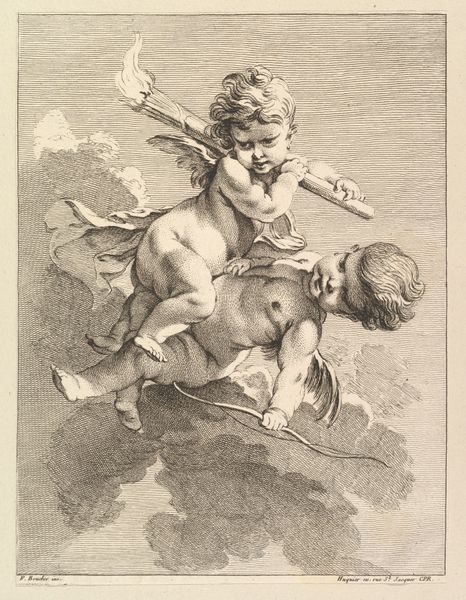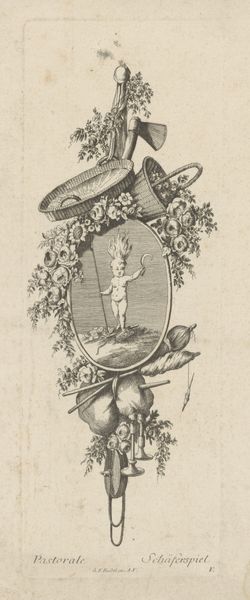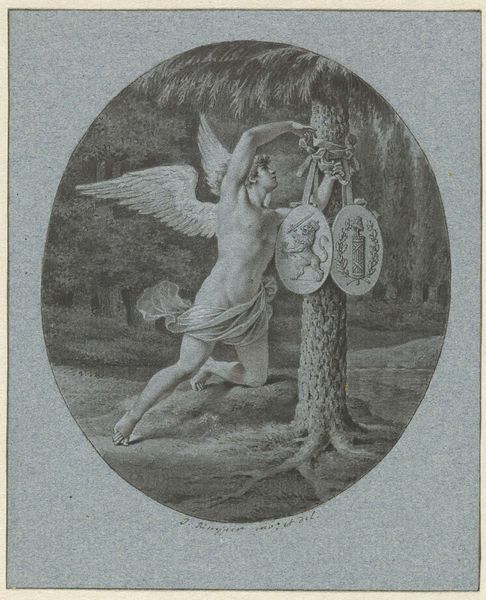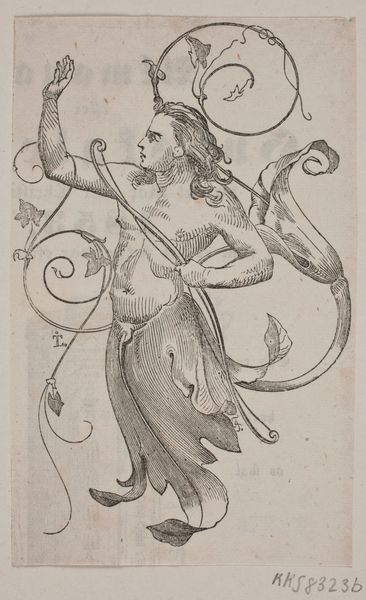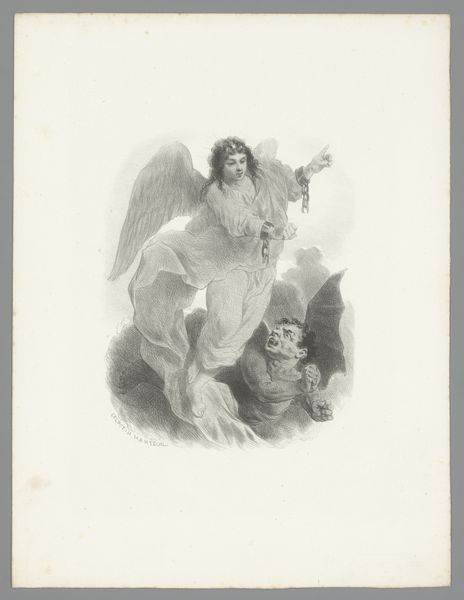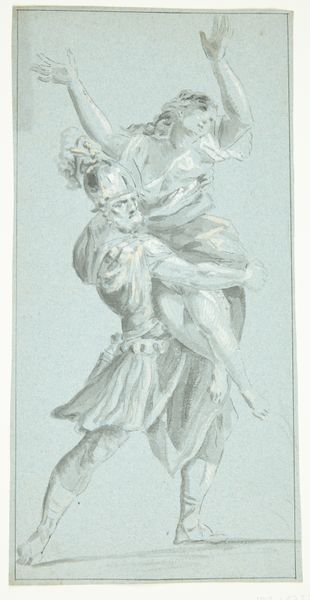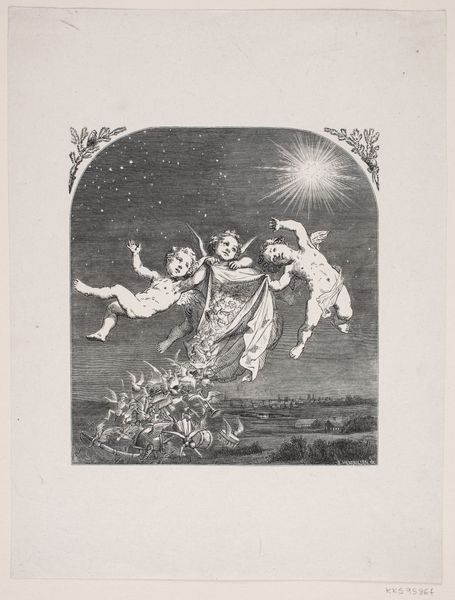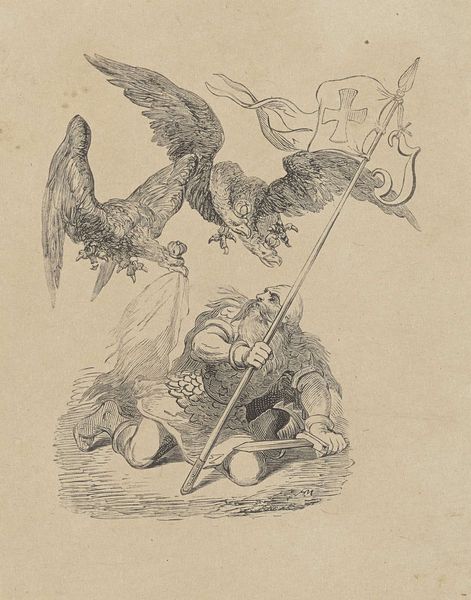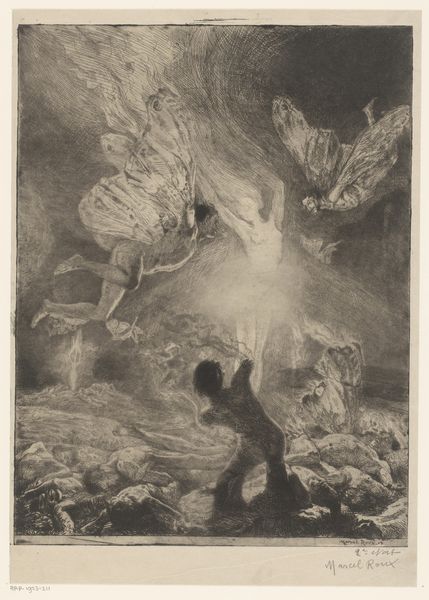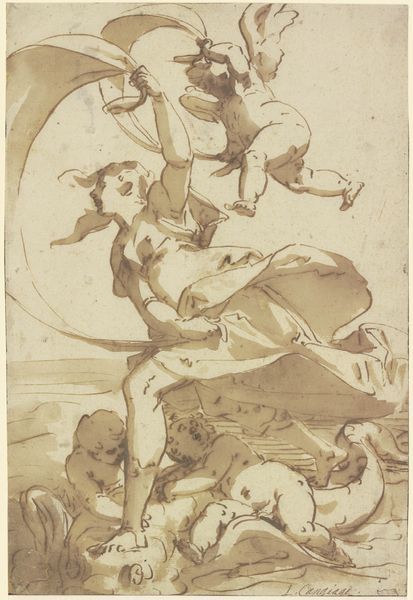
A winged putto and turtle doves 1850 - 1900
0:00
0:00
Copyright: Public Domain
Jules-Edmond-Charles Lachaise’s painting of a winged putto and turtle doves, now at the Metropolitan Museum of Art, invites us to explore the social narratives embedded in its imagery. This work draws heavily from artistic traditions of the past, notably those of the French Rococo. The imagery of putti and doves evokes themes of love, peace, and innocence. Painted during Lachaise's lifetime, we can assume that the artist engaged with his cultural environment which was marked by the aftermath of World War I. At the time there was a turn to tradition and romantic idealism in society, especially within the art world. Was this idealized vision of peace and innocence a comforting counterpoint to the harsh realities of war? As art historians, we look at the artistic influences that shaped Lachaise's style, but also the socio-political context in which he lived. By examining period documents, critical reviews, and other historical sources, we may better understand the institutional forces that shaped his artistic vision.
Comments
No comments
Be the first to comment and join the conversation on the ultimate creative platform.
